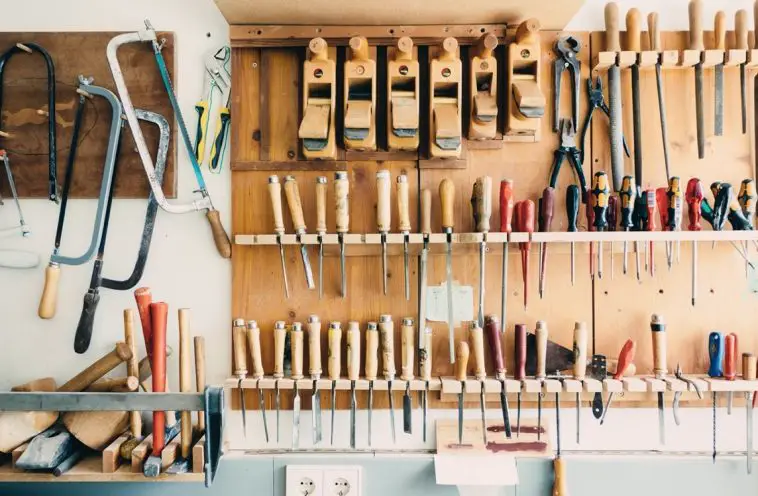When repairing home appliances or a car, it may happen that you have to take measurements, carry out diagnostics, and check what the problem is. Without specialized tools, this may be difficult or even impossible, so it is worth providing yourself with well-chosen equipment.
Being a person with technical skills contributes to the satisfaction of the whole family. So, maybe you would try to make your work more comfortable and more enjoyable with some tools?
1. Infrared Thermometer
The infrared thermometer is designed for quick and non-contact temperature measurement of such objects, as electrical equipment, walls at home, motors in cars, etc. The information which is displayed on a readable LED screen ensures perfect visibility in all light conditions. You can also switch the temperature unit from Celsius to Fahrenheit at the touch of a button.
With the best infrared thermometer, you can, for example, efficiently detect heat loss at home. By scanning a given area in the house, e.g., a window or a door frame, you will check if the temperature in the window’s surroundings is not much lower than in the center of the room. This is a function that allows you to quickly and easily avoid unnecessary heat loss in the house. No one wants to pay high bills, and checking the heat loss will provide you with some savings.
2. A Toolbox Full of Treasures
Certainly, a suitable case containing all the necessary tools for tightening and unscrewing various types of bolts, screws, and nuts will significantly facilitate all repairs. If you can afford it, it’s advisable to choose a tool kit containing numerous elements so that it can be useful in solving various technical problems.
If you decide on a rich set with more than a hundred elements, you can be sure that you can handle the repairing of most components in your home by yourself. It should contain ratchets, extensions, socket wrenches, flat wrenches, and screwdriver bits in various sizes and types. With tools like this, there is no excuse for repairing a leaking tap if someone asks you. After some time, you should notice that your repairing skills and savings will rise, as you stopped spending money on professionals.
3. Don’t Forget About Your Safety
Operating repairing tools may be dangerous; that is why we need some protection. One of the most common ways to stay safe is to wear special gloves that protect your hands from chafing and bumps.
A hammer is a high-impact hand tool that can harm you if you don’t think about your safety. While working with a hammer, material shards can get into your eyes, so don’t forget to purchase glasses for eye protection. Even quick repairs can put you at risk of health loss. Don’t worry if you normally wear glasses, and are afraid that you can’t wear them under the safety ones – you can buy a model that fits over them.
4. Power Drill
Most DIYers invest in a solid power drill, and they never regret this. Why? It is always better to drill holes and drive screws with a power drill than with a screwdriver. Working with it is just much faster and easier than operating with hands only.
Make sure you are choosing a model that recharges quickly or comes with two batteries. A cordless drill is a tool you will appreciate and use a lot, but if your DIY aspirations are not significant, you may want to buy a moderately priced corded drill.
5. Helpful Diagnostic Tools
Any complex machine can refuse to cooperate. The problem is trivial when we know what has broken. However, when, for example, the car’s engine does not run evenly, and the reason for the fault is hidden, we must diagnose it somehow. Maintaining your tools can be easy or hard depending on their design, complexity, and parts available. Hand tools are easily replaceable, while power tools will be on the more expensive side of things.
Unfortunately, our eyes can’t reach everywhere – there some places with difficult access inside the car, such as the engine cylinders. To inspect the condition of a cylinder liner or a piston crown, we must remove the head first. However, we can avoid it if we need to judge the condition of these elements roughly.
For this purpose, we can use an endoscope – a tiny camera designed to work in tight places. This device may be connected to our computer or a smartphone via USB or Wi-Fi. Then we can watch the image from the camera and find what’s wrong with the engine.
Summary
Having a workshop requires you to specify what kind of tools you will use the most. You need to decide if the main activity is going to be fixing cars or maybe something connected to hydraulics – either of those needs setting the right budget. As the choice of workshop equipment is vast, before buying anything, it would be best to make a list of things you need.
The life of any device can be from time to time interrupted by a breakdown, so it’s worth stocking up with tools that will allow you to get rid of the problem quickly. With everything you need at hand, you’ll find that you can do most of the repairs yourself.



